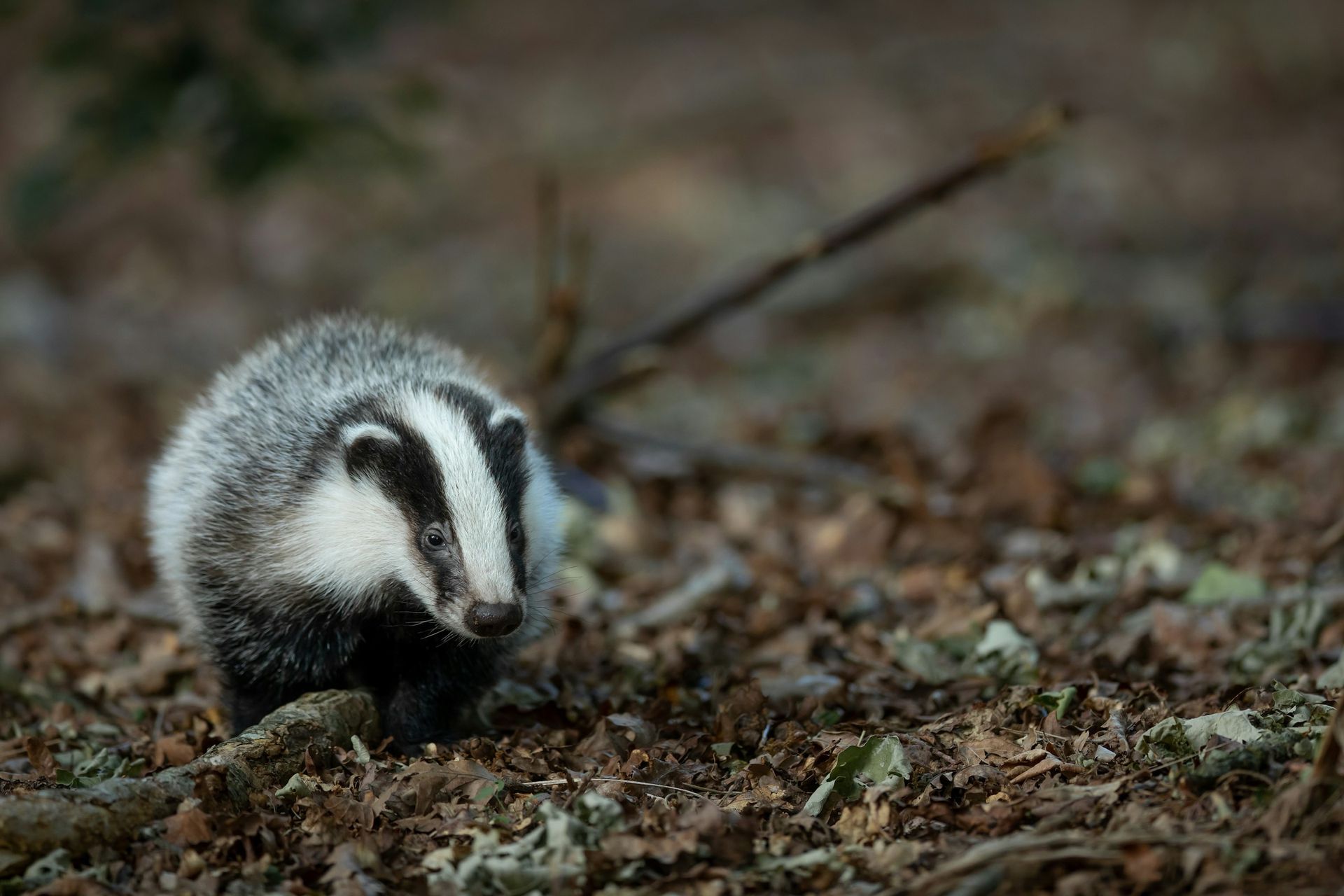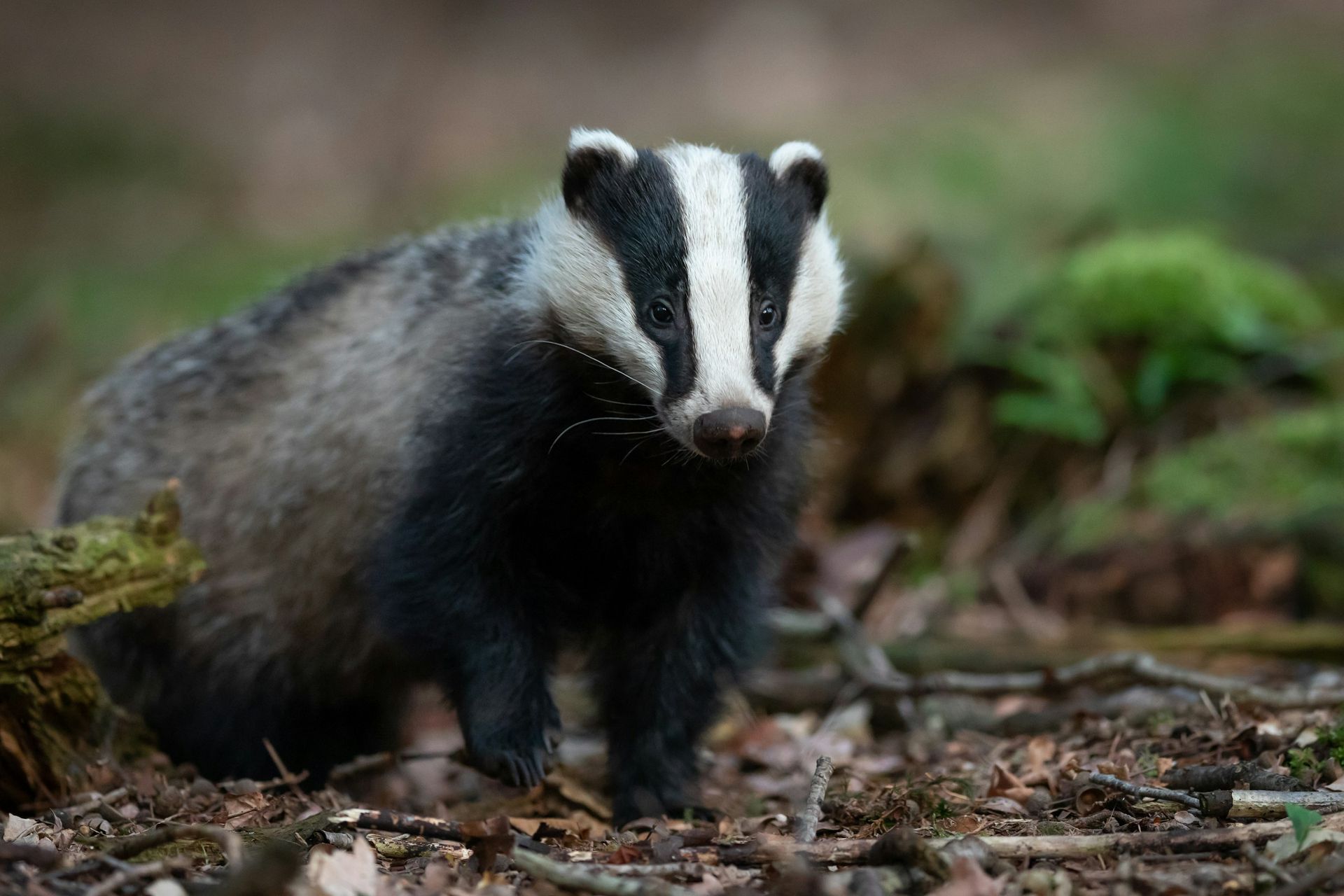Badgers are robust, burrowing mammals known for their distinctive black-and-white striped faces and powerful digging abilities. Badgers are highly adapted to a subterranean lifestyle, using strong forelimbs and long claws to excavate burrows and hunt underground prey.
Typically weighing between 10-30 pounds and measuring up to 30 inches in length, badgers have a low, wide build covered in coarse gray or brown fur. Their muscular bodies and thick skin provide protection against predators and the rigors of burrowing.
Badgers play a critical role in ecosystems by controlling populations of rodents, insects, and other burrowing creatures. They inhabit open grasslands, prairies, and scrublands, preferring loose, well-drained soil where they can dig extensive burrow systems, called setts. These burrows provide shelter and also benefit other species, such as burrowing owls and foxes, that repurpose abandoned badger dens.
Solitary by nature, badgers are mostly nocturnal and spend their nights hunting small mammals, birds, insects, and carrion. Mating occurs in late summer, but females delay implantation until winter, giving birth to litters of 1-5 kits in early spring. The mother raises the young alone, teaching them survival skills before they disperse.
While badgers face threats from coyotes, eagles, and large predators, human-related dangers such as habitat destruction and road mortality pose greater risks. They are found throughout North America, from southern Canada to northern Mexico, thriving in a range of habitats where open land is available

For your safety and the well-being of wildlife, please observe animals from a distance and avoid touching or disturbing them. If you encounter an animal that appears injured or in distress, contact a licensed wildlife rescue organization for guidance before intervening.
Found An Animal? Not sure how to help a wild animal in need? Learn when to step in, who to call, and how to help safely.
Did You Know?
- Badgers can dig through compacted soil faster than a human with a shovel.
- They have a symbiotic relationship with coyotes—badgers dig out rodents, and coyotes catch escaping prey, benefiting both species.
- Badgers can run up to 19 miles per hour in short bursts to evade predators.
- Their thick skin and aggressive nature make them formidable opponents against much larger predators.
- Badgers do not hibernate, but enter a state of torpor in extreme cold, reducing activity to conserve energy.
- They mark their territory using scent glands to communicate with other badgers.
- Fossil evidence suggests badgers have existed for over 3 million years, adapting to various climates and terrains.
- Badgers like to save their food, treating the soil like a refrigerator. They'll bury meals underground and save them for later consumption.
Problems Faced In The Wild
- Habitat Loss: Urbanization and agricultural expansion reduce badger habitats.
- Burrow Instability: Increased frequency of extreme weather events (heavy rains, flooding) due to climate change can lead to soil erosion and instability, indirectly causing badger burrow collapses and trapping or injuring the animals inside.
- Vehicle Collisions: Badgers frequently fall victim to road mortality due to their low, slow-moving stature.
- Conflicts: Sometimes considered pests, badgers are sometimes trapped or killed to prevent burrow damage to crops and livestock.
- Fragmentation: Fences, roads, and developments disrupt badger territories and limit genetic diversity.
Tips For Cohabitation
- Avoid Using Poisons: Limit rodenticides and pesticides that can harm badgers and their prey.
- Drive Cautiously: Be aware of badgers crossing roads in rural areas.
- Preserve Natural Habitat: PMaintain open grasslands and avoid excessive development in badger-prone areas.
- Secure Livestock Areas Naturally: Use non-lethal deterrents instead of trapping or killing badgers.
- Respect Burrows: Avoid collapsing dens when working in agricultural or open land.
- Provide Escape Routes: Badgers can accidentally fall into window wells, uncovered pools, or other man-made depressions. Providing a simple escape ramp (a sturdy plank of wood) can allow them to climb out and avoid becoming trapped. This is especially important in suburban or rural areas where these structures exist



